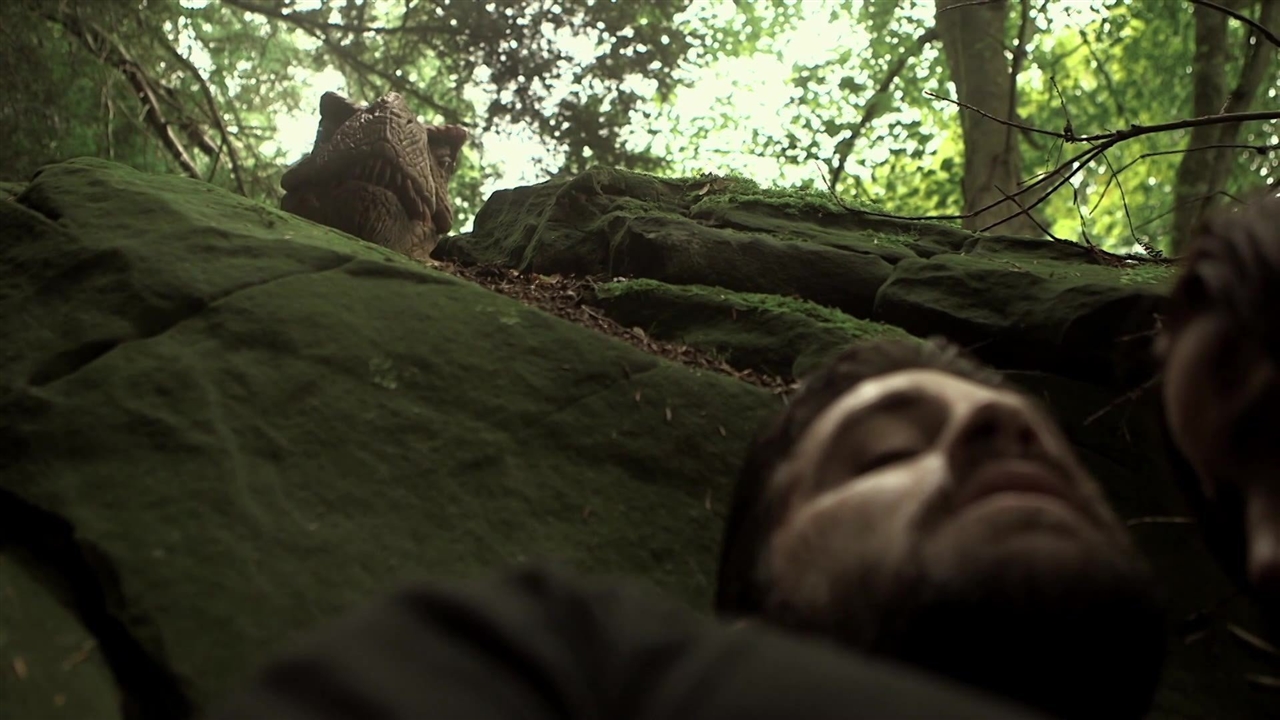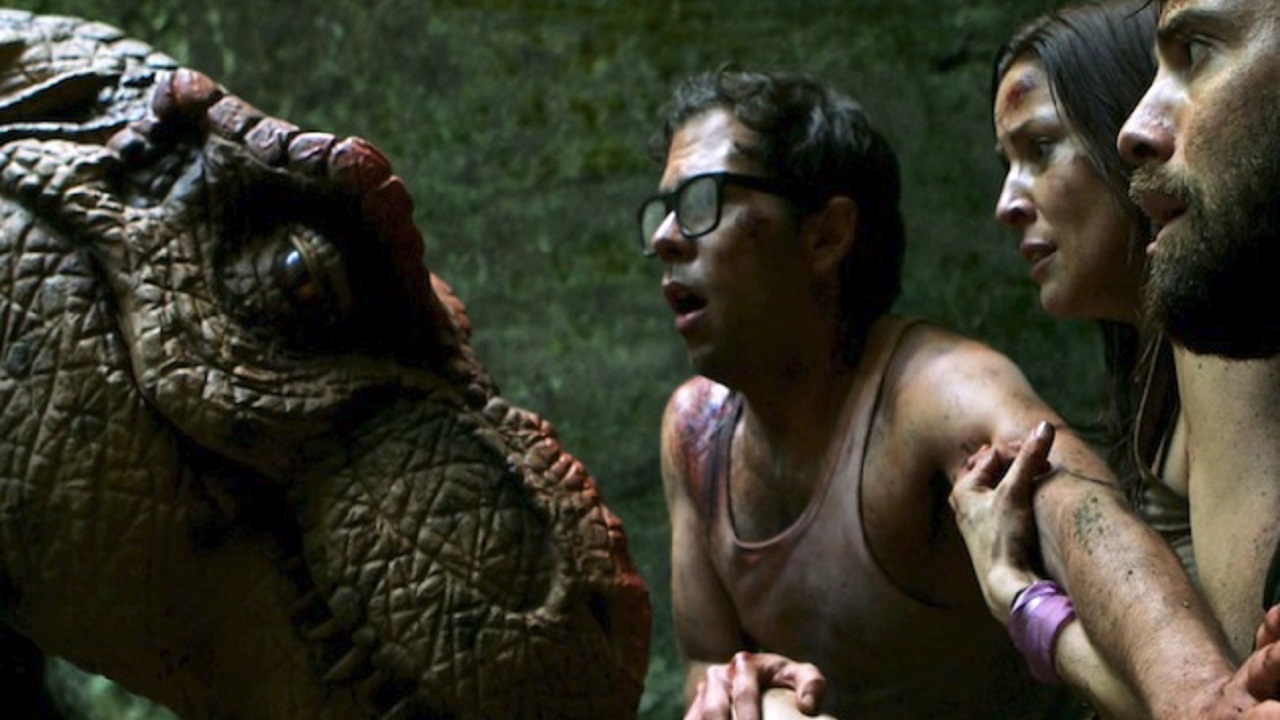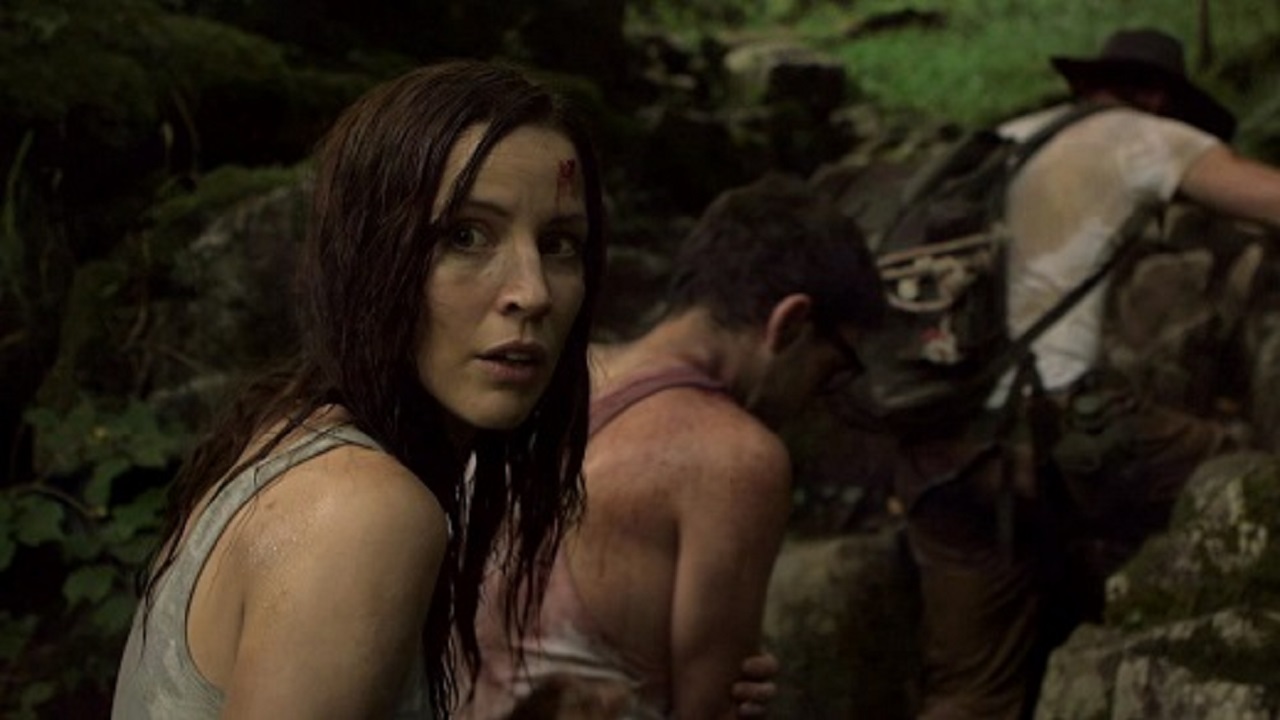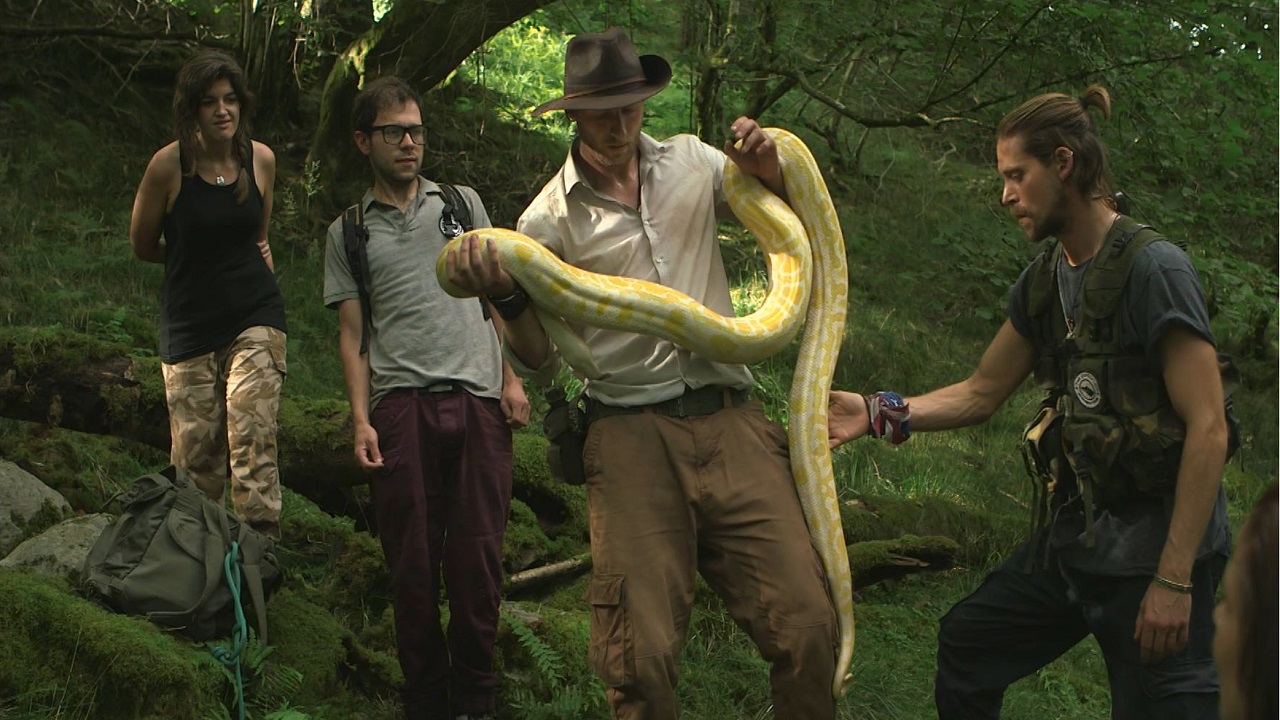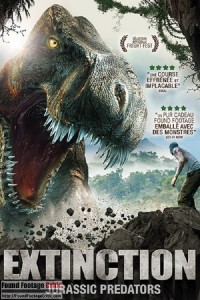 “Extinction: Jurassic Predators” (aka Extinction) is a found footage film released in 2014, directed by Adam Spinks and written by Adam Spinks and Ben Loyd-Holmes. The film follows a documentary crew who fly to the Amazon rainforest in Peru to make a documentary on research performed by a scientist studying endangered species.
“Extinction: Jurassic Predators” (aka Extinction) is a found footage film released in 2014, directed by Adam Spinks and written by Adam Spinks and Ben Loyd-Holmes. The film follows a documentary crew who fly to the Amazon rainforest in Peru to make a documentary on research performed by a scientist studying endangered species.
The film starts with an onscreen message:
“The footage you are about to see was recorded during the expedition of the Amazon. The footage has been assembled as per the camera timecode. The footage has not been altered and after extensive testing has been considered genuine. What you are about to see will change the way we as scientists view the natural world.”
Extinction opens with a documentary film crew comprised of executive producer Michelle (Sarah Mac) and cinematographer James (Daniel Caren) preparing to fly from the United States to Peru to interview a world renowned scientist performing research in the Amazon rainforest. Michelle is a no-nonsense professional journalist who plays strictly by the book. We come to understand that James is a last minute replacement for the original cinematographer assigned to the story. James is the polar opposite of Michelle, a socially awkward hyperactive and equally overzealous cinematographer who has trouble filtering his thoughts and has a penchant for saying the wrong thing at the wrong time.
The duo fly by jet to Peru and then switch to a small prop plane that takes them to the remote locale of the research team. Upon arrival they meet Professor John Howson (Ben Loyd-Holmes), who is leading the research team and is also a world renowned crypto-zoologist. John drives the documentary crew to his research facility, where they meet the rest of the team: botanist Lisa (Emma Lillie Lees) and biologist Tim (Simon Burbage), who is afraid of his own shadow.
We also meet Rob (Neil Newbon) who is second in command. Ben and Rob are of the same clothe, smart intellectuals and experienced outbackers, who are short on words, big on safety, and wholly devoted to their research.
Sarah Mac performs exemplary and steals the show as the no nonsense journalist Michelle.
The next morning, the group heads out in two SUVs and are dismayed to find their entire research site was cleared by a logging company. With the research area destroyed, the group drives deeper into the rainforest to an untainted region to continue their work. En route to the new location one of the SUVs breaks down. With nightfall approaching, John decides it’s best to wait until morning to fix the vehicle, so the group hunkers down and sleeps in their vehicles for the night. A loud roaring in the middle of the night wakes everyone from their sleep. Rob and John order everyone to remain in the vehicle while they investigate. During the chaos, one of their local guides drives off with the only working SUV, stranding the research team in the wilderness.
At first light the remaining SUV is repaired and the team heads deeper into the rainforest. Upon arriving at the new site, the group heads out on foot. During their hike, the film does a good job illustrating the dangers of the rainforest, including the local animals and fauna, rough terrain, and general vulnerability of humankind outside of the trappings of civilization. Extinction also makes great use of the wildlife that one would expect to find in the rainforest, ranging from obscenely large insects, to snakes, spiders, and primates.
During their second night in the field, the research team sets up camp. Michelle and James share the same tent and are again awoken by a loud roar. The creature outside their tent sounds very large and very close. During a particularly tense scene, the creature brushes against the side of their tent, pushing in the canvas with its large foot.
The next morning Michelle and James express their concern over what they experienced the prior evening, but John and Rob shrug it off as local wildlife that are nothing more than curious about the human visitors.
From there things take a turn for the worse as we soon learn that Michelle and James were not overestimating the severity and dangers of their situation, and the creature they encountered the previous evening is in fact a carnivorous dinosaur.
Acting
The acting in Extinction is well above average for a found footage film. Sarah Mac performs exemplary and steals the show as the no nonsense journalist Michelle. Ben Loyd-Holmes and Neil Newbon are very good as the two leaders of the group. If there’s any criticism to be had with the acting, it would be that the characters of James, Lisa, and Tim are portrayed with unnecessarily exaggerated personalities, taking their social awkwardness to comical levels that doesn’t always translate well on screen. As good as the acting is, a more toned down version of these characters would have brought more balance to the film.
Plot
While very interesting, Extinction’s plot clearly borrows plot elements from (or pays homage to) the Jurassic Park franchise. In one particular scene, a character comes face to face with a large dinosaur and says “Don’t move. Its vision’s based on movement. It can’t see us if we don’t move.” – a very similar scene can be found in one of the Jurassic Park films, although the outcome is very different. Also, the pivotal scene in Jurassic Park (1993) involving a T-Rex chasing a jeep is also replicated in some fashion in Extinction.
If we consider this film in the universe of Hollywood narratives, Extinction clearly isn’t the best in the pack, but in the world of small budget found footage films, Extinction is a clear front-runner.
Under normal circumstances, Found Footage Critic would penalize a film for excessive use of video diaries filmed in the forest/jungle. However, in the case of Extinction, the video diaries recorded by James fit within the context of his obsessive compulsive nature, making these selfies come across as something the character would actually do.
Unlike most found footage films, the practical effects and CGI in <em>Extinction </em>are good enough to show in broad daylight rather than at night or hidden in the shadows
Cinematography
The found footage cinematography in Extinction is near flawless, put not perfect. A few misgivings include the unrealistically long camera battery life and one scene where the camera is submerged underwater and miraculously works several hours later. While a submerged camera will work if permitted to dry properly, the drying process is on the order of a week (or more), not to mention the water would drain (or short-out) the battery.
The inclusion of brief snippets of video where the camera records for only a second or two and is then abruptly cut does a great job at portraying the breadth of raw footage captured by cinematographer James. These short snippets also give Extinction a more authentic found footage film feel.
Another interesting scene not observed in most found footage films is where the character Rob views the camera footage to see what happened the night before. Quite often proof of an event is captured on camera, but the characters never ask to see the footage!
The special effects in Extinction are nothing short of exceptional. Unlike most found footage films, the practical effects and CGI in Extinction are good enough to show in broad daylight rather than at night or hidden in the shadows, but the effects are not perfect. The dinosaur skin doesn’t have that organic texture and fluid motion that one would expect from a real-life animal. Nonetheless, the dinosaurs presented in Extinction feel real enough to maintain the tension of an actual threat throughout the film.

